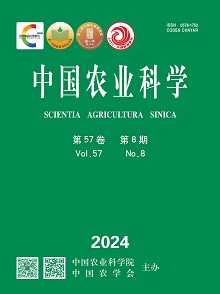|
|
Correlation Between the SCS and the Amount and Composition of Fatty Acids in Milk of Chinese Holstein
MAO Yong-Jiang, CHANG Ling-Ling, YANG Zhang-Ping, WU Hai-Tao, CHEN Ying, SHI Xue-Kui, LI Yun-Long, LIANG Xiang-Huan, YIN Zhao-Hua
Scientia Agricultura Sinica
2011, 44 (24):
5073-5082.
DOI: 10.3864/j.issn.0578-1752.2011.24.013
【Objective】 The objective of this study was to investigate the correlation between the SCC and the amount and composition of fatty acids in milk of Chinese Holstein 【Method】 Mixed milk samples were collected in the morning, noon and at night from 121 Chinese Holstein cows that free of clinical mastitis, and the parity was two or three, day in milk was from 100 to 300. The amounts of fatty acid of milk were determined by gas chromatography. The effects of SCS on fat percentage and fatty acid composition of milk were analyzed by one-way ANOVA. The SPSS software was used to analyze SCS and milk fatty acids composition of correlation and regression. 【Result】 Twenty-one fatty acids which are from C4 to C22 can be found out. Season had significant effects on the quantity and composition of fatty acids (P<0.05), and the milking stage had minor effects on the quantity and composition of fatty acids. The effects of SCS on fat percentage and the amount of fatty acids were significant at 0.05 except eight fatty acids (C14:1, C16:1, C17:0, C18:0, C18:2n6c, C20:0, C20:3, C20:4 and PUFA). With the increasing of SCS in milk, fat percentage, the amount of total fatty acid, SFA, MUFA, short chain FA, medium chain FA and long chain FA were decreasing. The SCS showed no significant effects on the relative amount of twenty-three FA including SFA, MUFA, PUFA, short chain FA, medium chain FA and long chain FA except four low content of FA (C11:0, C20:0, C20:3 and DHA). SCS a showed significant negative relationship with the amounts of SFA, MUFA, short chain FA, medium chain FA and long chain FA (P<0.05), and a significant positive relationship with the relative amount of PUFA and long chain FA. SCS showed a significant negative relationship with the relative amount of SFA, short chain FA and medium chain FA (P<0.05). Logarithm equations were optimum for the amount of total FA, SFA, MUFA, short chain FA, medium chain FA and long chain FA depending on SCS, and the fitness of the equations were above 0.9. Exponent equations were optimum for the relative amount of SFA depending on SCS, and the fitness of the equations were also above 0.9. The fitness of other equations with the relative amount of FA depending on SCS were below 0.9. 【Conclusion】These results have provided a useful foundation for the prediction and evaluation of FA through SCS.
Reference |
Related Articles |
Metrics
|
|











